About this Project
The process of fixing these leaky chimneys always begins with a thorough inspection and analysis of where the water is coming from. Many of these issues can be solved by our techs at the same time as the inspection! Once the inspection is complete, your technician will discuss your options and find a fix that fits your needs and budget.
Check out the photos below of some of our latest leaky chimneys!

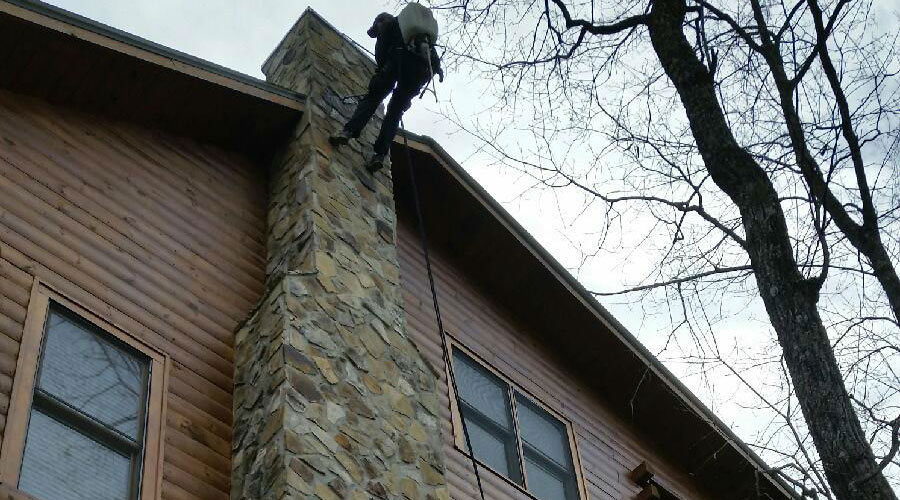
APPLYING WATER REPELLANT
One of our techs repelling from a tall chimney and applying a water repellant. This product works incredibly well and will cause water that hits the surface of the chimney to bead and roll off- much like a rain jacket would.
UNSEALED STONE
On large stone or brick chimneys like this one, there can be a lot of water absorption into the exposed mortar joints and the stone itself. Over time, the action of this water freezing and expanding can weaken and crack the masonry. As shown in later photos, we use a product that is made for this application that will seal the masonry without trapping water vapor.
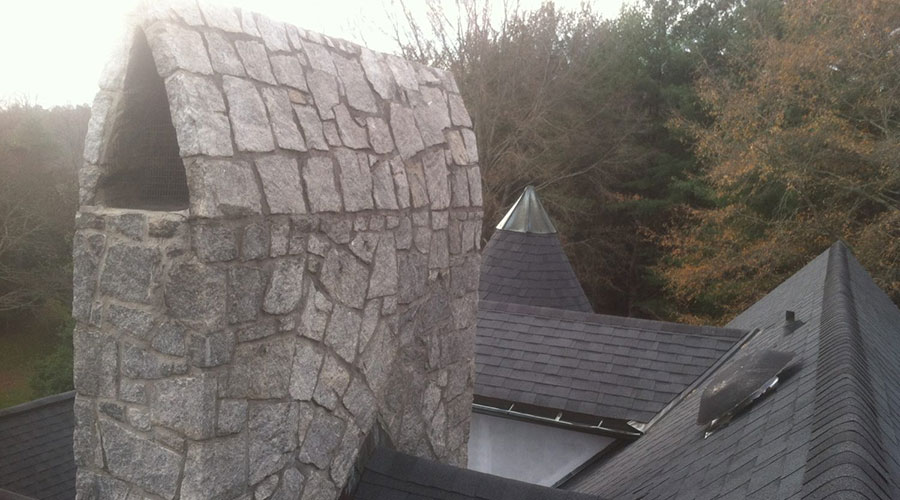
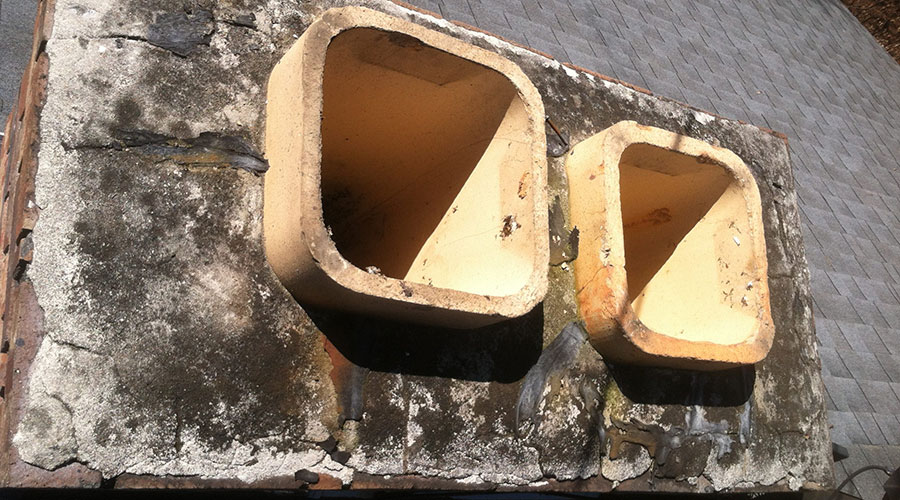
BADLY DETERIORATED CROWN
This chimney has been patched with incorrect products several times which has led to accelerated deterioration. This one needs a new crown and cap.
REPLACING A CHASE COVER
Here are two chase covers – the old rusty one, and our new custom powder coated, stainless steel chase cover. This is the part of factory-built fireplace systems that keeps the rain out of the wooden chimney chase. Pretty important!
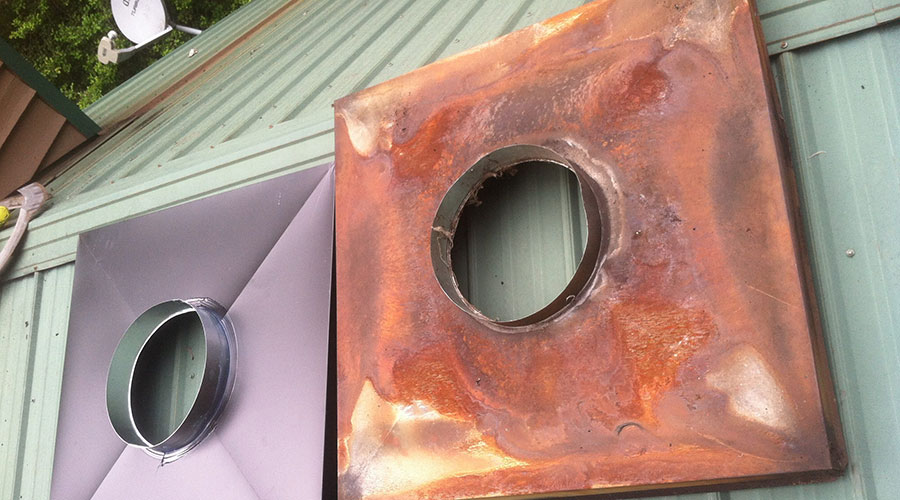

CROWN
After applying two layers of a chimney crown specific sealant, this crown will now shed water off to the roof.
WEAK MORTAR JOINTS
Mortar is extremely porous – and therefore often the source of water entry. These mortar joints have seen so much deterioration that the mortar has begun to fall out, leading to a weaker chimney and increased water intrusion into the home.
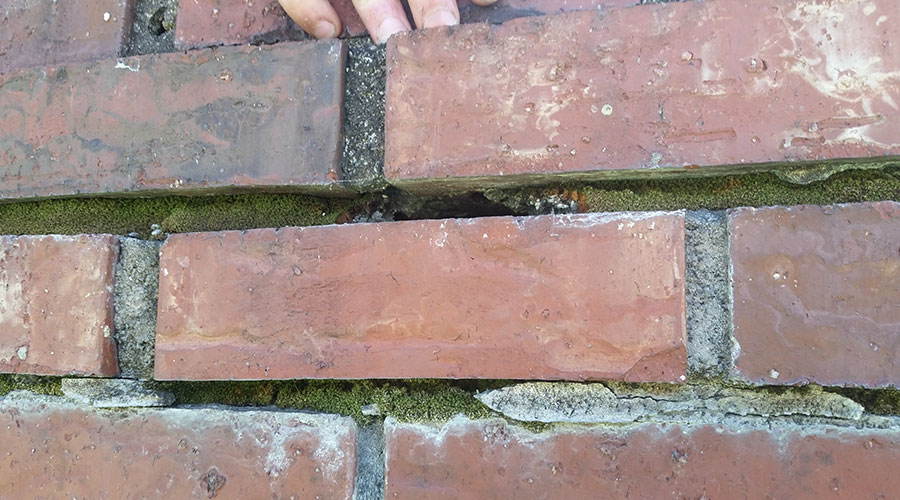
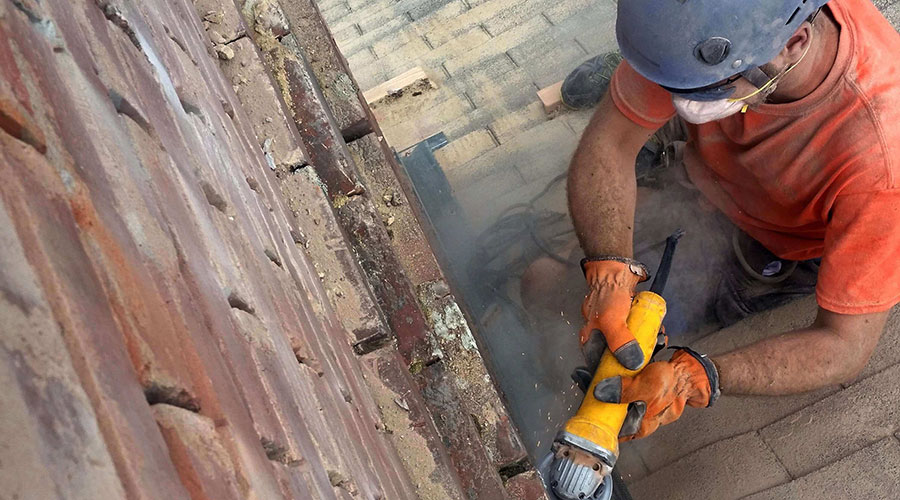
TUCK-POINTING MORTAR JOINTS
Sometimes, if the deterioration is not too severe, mortar joints can be redone. This process – as Russell is demonstration in this photo – consists of grinding out the soft, old mortar and placing new, better mortar in place. This can greatly extend the life of the chimney.
